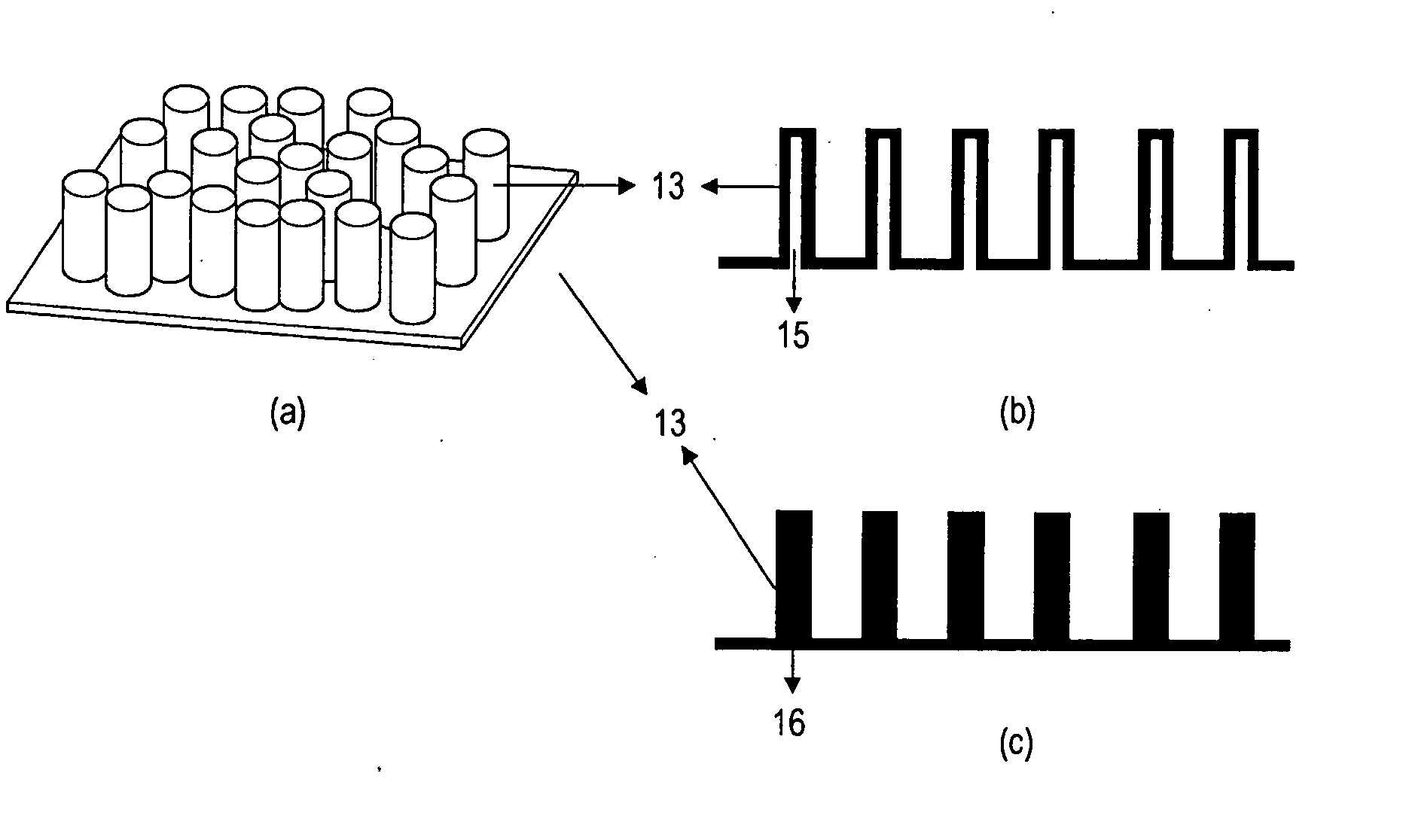Method of fabricating a three-dimensional nanostructure
a three-dimensional nanostructure and nano-structure technology, applied in the field of three-dimensional nanostructure fabrication, can solve the problems of high temperature and high vacuum, the above method is not suitable for mass production, and the cvd method must be maintained, so as to achieve rapid and reliable results
- Summary
- Abstract
- Description
- Claims
- Application Information
AI Technical Summary
Benefits of technology
Problems solved by technology
Method used
Image
Examples
example 1
[0043] A polycarbonate Track-etched membrane having pores (diameter: 100 nm) supplied by GE Osmonics, which is used as a porous polymer membrane, was placed on 0.2M of an aqueous solution of FeCl3, a water-soluble oxidizing agent, as shown in FIG. 2b. The water-soluble oxidizing agent filled the pores via capillary phenomenon. Then, a pyrrole monomer solution in 0.2M of n-hexane was poured thereon as shown in FIG. 2c.
[0044] The pyrrole monomer and the oxidizing agent, which is a polymerization reaction initiator, were reacted at an interface of the aqueous phase and the organic solvent phase that were not intermixed, by which the polypyrrole (hereinafter referred to “PPy”) was formed inside the porous polymer membrane.
[0045] After polymerization for about 10 minutes, the resultant was washed with methanol and ultra-pure water. Thereafter, the polymer membrane used for the polymerization was removed through the use of methyl chloride in order to obtain a three-dimensional nanotube ...
example 2
[0055] A three-dimensional nanostructure was prepared in the same way as in Example 1 except that the three-dimensional nanotube-type structure with an outer diameter of 600 nm and a thickness of 100 nm was formed through using the porous polymer membrane having a pore size of 600 nm.
[0056]FIGS. 4a and 4b are scanning electron microscope photographs of a surface and cross-section of the three-dimensional nanostructure, which is fabricated in Example 2. From each of the cross-section of the fabricated nanostructure, it can be noted that the length and diameter of the PPy nanotube are uniform.
example 3
[0057] A three-dimensional nanostructure was prepared in the same way as in Example 1 except that the three-dimensional nanotube-type structure with an outer diameter of 1000 nm and a thickness of 200 nm was formed by using the porous polymer membrane having a pore size of 1000 nm.
[0058]FIGS. 5a and 5b are scanning electron microscope photographs of a surface and cross-section of the three-dimensional nanostructure, which is fabricated in Example 3. From each of the cross-section of the fabricated nanostructure, it can be noted that the length and diameter of the PPy nanotube are uniform.
PUM
| Property | Measurement | Unit |
|---|---|---|
| diameter | aaaaa | aaaaa |
| diameter | aaaaa | aaaaa |
| diameter | aaaaa | aaaaa |
Abstract
Description
Claims
Application Information
 Login to View More
Login to View More - R&D
- Intellectual Property
- Life Sciences
- Materials
- Tech Scout
- Unparalleled Data Quality
- Higher Quality Content
- 60% Fewer Hallucinations
Browse by: Latest US Patents, China's latest patents, Technical Efficacy Thesaurus, Application Domain, Technology Topic, Popular Technical Reports.
© 2025 PatSnap. All rights reserved.Legal|Privacy policy|Modern Slavery Act Transparency Statement|Sitemap|About US| Contact US: help@patsnap.com



